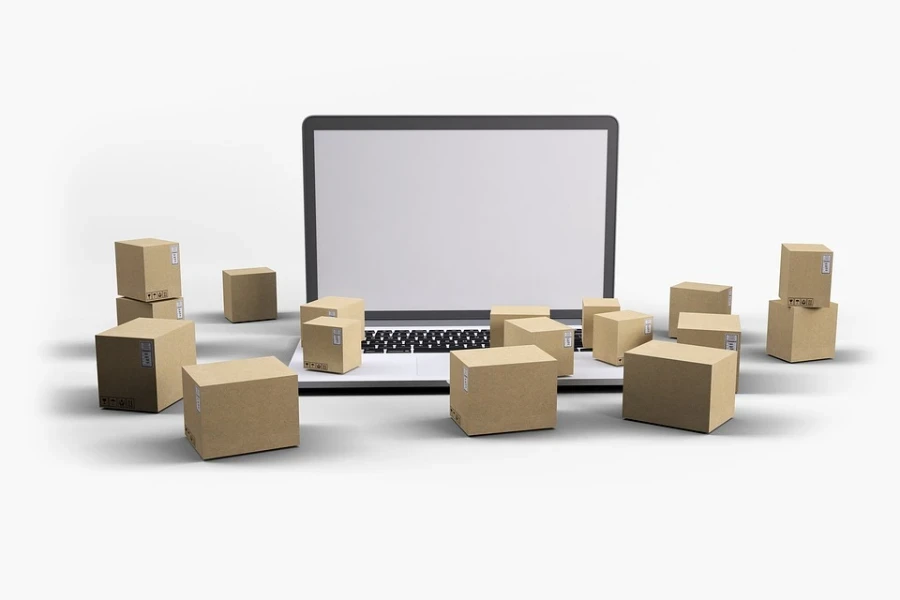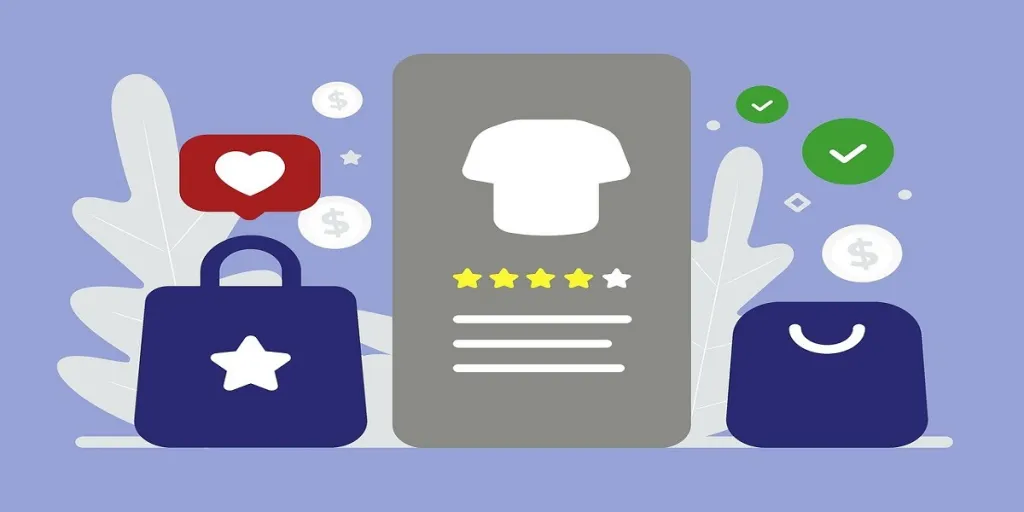It was reported that between 2020 and 2022, across a broad array of sectors – from entertainment and consumer electronics to fashion, clothing retail, food, and coffee – saw the closure of more than 20,000 brick-and-mortar stores worldwide, including in the US.
Yet, not all the regions are experiencing the retail apocalypse- a term coined in the 1990s but only started gaining momentum in 2017, to describe the closure of multiple retail stores. Now, you may wonder, in light of all these conflicting reports, which perspective should we place our faith in? Is the rise of e-commerce destined to displace traditional mortar stores, or is there still a glimmer of hope for the survival of mortar retailers?
A Forbes article that talked about the future of retail offers valuable insights to shed light on the question: The ideal shopping experience to most consumers today means hybrid shopping, a blend of both online and offline retail experiences.
Let’s dive deeper into such a preferred model by exploring the omnichannel ecommerce strategies and omnichannel fulfillment strategies, as well as the ways to get them seamlessly integrated for an optimal consumer experience.
Table of Contents
Overview of omnichannel ecommerce strategies and ways to implement them
Deep dive into omnichannel fulfillment strategies
How to implement omnichannel fulfillment strategies
How to integrate omnichannel ecommerce and fulfillment strategies
A unified experience
Overview of omnichannel ecommerce strategies and ways to implement them
To gain a comprehensive understanding of omnichannel strategies, let’s first explore the origin of the term “omni.” Derived from the Latin word “omnis,” meaning “all” or “every”, it signifies a more inclusive approach compared to the conventional multi-channel concept. Omnichannel focuses not only on the deployment of multiple methods but also on the seamless integration of all employed methods. From the perspective of the core concept of omnichannel ecommerce strategy, it emphasizes a unified amalgamation that combines online channels (such as computers or mobile apps) with offline in-store experiences.
A practical example that embodies such an omnichannel strategy is the “Buy Online, Pick Up In-Store” (BOPIS) service first offered by retailers like Walmart and Zara, with more others following. While this strategy primarily falls under the realm of omnichannel retail, it plays a crucial role within the broader scope of omnichannel ecommerce as it bridges the gap between physical and digital shopping experiences.
To ensure the successful implementation of omnichannel ecommerce strategies, let’s address each of the three primary stages: the foundational phase, the development and application phase, and the ongoing maintenance and progress phase.
The fundamentals
The first key basis in omnichannel ecommerce strategy implementation is to lay a solid groundwork for an engaging online presence. This is primarily achievable via the optimization of the website or mobile app, ensuring it is mobile-friendly, user-friendly, secure, and fast-loading with search engine optimization (SEO) in place.
On top of wide-ranging online visibility, the next foundational execution tactic is to ensure the recognition and deployment of the most-used or preferred customer channels. Such detection is imperative in matching customer behavior across these channels to identify potential touchpoints to effectively engage customers and improve their overall experience. These essential executions combined form the cornerstone for an effective and customer-centric omnichannel ecommerce approach.
Building and application
Content customization is pivotal during the building and implementation stages. It mainly entails tailoring content to suit the preferences, behaviors, and needs of various consumer segments. Alongside this, target audience segmentation enables targeted promotions to be more relevant and impactful, especially when promoting through social media marketing, where its features can be fully leveraged to boost website traffic, conversions, brand awareness, engagement, and customer loyalty.
In a nutshell, the successful application of omnichannel ecommerce strategies can be achieved through a combination of content customization, audience segmentation, and social media marketing, thereby creating a highly customized and dynamic omnichannel ecosystem that resonates with the target audience and fostering brand loyalty.
Progress and upkeep
Similar to other ongoing initiatives, omnichannel strategies require progress and upkeep to succeed. A key aspect of this is providing cross-channel customer support, ensuring consistent and efficient assistance across all channels to build trust and demonstrate the brand’s commitment.
A vital component closely related to this full-scale customer support is the incorporation of robust feedback mechanisms across all channels. The goal is to gain insights into consumer expectations and preferences by soliciting and analyzing their feedback. This feedback is essential for making data-driven decisions that lead to continual improvements in product and service refinement and enhancement.
Deep dive into omnichannel fulfillment strategies
While the proficient execution of omnichannel ecommerce strategies serves as the backbone for a unified shopping experience, weaving in omnichannel fulfillment strategies is crucial in elevating the seamlessness across online and offline channels.
Through coordination of inventory and order management via ecommerce and traditional channels, these fulfillment strategies help to optimize logistics and supply chain operations, including order processing, delivery logistics, and returns. One such practical example is Nordstrom, which leverages data and technology for a unified inventory source to fulfill online orders from stores if the inventory is closer to the customer to reduce delivery time.
Overall, the omnichannel fulfillment strategies can be consolidated into the following three categories: Delivery Options, In-store and Near-store Strategies, and Outsourced Fulfillment.
Delivery options

One of the top omnichannel fulfillment strategy categories is related to delivery options, with the main goal of catering to diverse priority requirements and preferences.
Standard Shipping, for example, serves as a cost-effective solution within the expected delivery time that is suitable for non-time-critical orders.
In contrast, Express Shipping offers accelerated delivery at a higher cost for any orders that desire faster service without immediate urgency. Same-Day Delivery, on the other hand, prioritizes speed for ultra-fast delivery and is ideal for time-sensitive purchases.
Overall, these delivery options aim to provide customers the flexibility to choose when and how they receive their orders, ensuring that the omnichannel fulfillment strategies align closely with the specific needs and preferences of different customers.
In-store and near-store strategies
The second key category of omnichannel fulfillment strategies is associated with making full use of the available physical store locations to provide greater convenience to customers. For example, Store Pickup and Ship to Store are options where customers order online and pick up in-store.
The slight difference between them is that Store Pickup takes advantage of existing store inventory to reduce shipping costs and time, whereas Ship to Store involves shipping an online order to a chosen store. Both options provide significant savings on shipping costs and also drive potential additional sales since it increases the chances for customers to explore other in-store products.
One of the most appealing aspects of these in-store or near-store strategies is probably their remarkable versatility, as they can be adapted into several variants with minor adjustments. For instance, Curbside Pickup is a strategy that not only allows customers the option to pick up their orders from the store but goes a step further by delivering the order right to their vehicle. Such a slight twist however can amplify convenience and caters to those seeking a contactless, and time-efficient shopping experience.
Similarly, Locker or Kiosk Pickup provides customers with the flexibility to conveniently retrieve their orders from the nearest locker or kiosk location based on their availability, which is particularly beneficial for individuals with diverse schedules. Meanwhile, strategies like Ship from Store maximize the utilization of physical stores by transforming them into mini-warehouses for efficient order fulfillment.
Additionally, the Buy Online, Return In-Store strategy is another way to open up opportunities for upselling or cross-selling, as it allows easy returns of online purchases at selected physical locations. In sum, these strategies’ adaptability is pivotal in catering to a wide spectrum of customer preferences and enhancing the overall customer journey.
Outsourced fulfillment
Outsourced fulfillment is another type of omnichannel fulfillment strategy that allows businesses to capitalize on the logistics expertise of specialized providers. A business may delegate its order fulfillment processes, including storage, packing, and shipping, to external service providers.
This approach encompasses various strategies such as dropshipping, where the business doesn’t hold inventory and instead relies on suppliers to ship products directly to customers; and marketplace fulfillment, in which online marketplaces like Alibaba.com, employing both self-operated and third-party logistics, allow retailers to tap into the infrastructure of established online marketplaces for efficient storage, packing, and shipping. Sellers can thus harness the expertise of both marketplace and specialized logistics providers to streamline warehousing and transportation.
How to implement omnichannel fulfillment strategies
To ensure the effective deployment of omnichannel fulfillment strategies, it is crucial to thoroughly consider and attend to all four key components listed below:
Streamlining inventory & locations
Successful omnichannel fulfillment is strongly correlated with centralized inventory management. It is a practice that allows businesses to better track and monitor their inventory levels and locations across all channels in real time. Common potential inventory issues such as stockouts, overstocks, and mis-picks can then be minimized or avoided altogether, while more optimized and streamlined inventory allocations based on demand patterns, stock availability, shipping costs, and delivery times can be implemented.
Leveraging physical store locations as centers for fulfilling orders, meanwhile, utilize inventory located in closer proximity to the customer, reducing both shipping times and costs. Such coordination between inventory management and physical locations enhances fulfillment efficiency and results in cost savings, catering to both in-store and near-store strategies.
Enhancing delivery & communication
Achieving success in omnichannel fulfillment is fundamentally linked to elevating the delivery experience, and this can be materialized by presenting a diverse range of delivery and pickup alternatives to customers. These include standard shipping, express shipping, store pickup, curbside pickup, and more.
Providing diverse and transparent information about delivery times and costs helps customers know what to expect and increases satisfaction. It’s also important to update customers about their order status in real time while making it easier for them to track their orders across different platforms.
Leveraging logistics partnerships
By working with logistics experts and delegating fulfillment tasks such as dropshipping, businesses can enhance their fulfillment potential. They can lower inventory expenses and hazards by ensuring that third-party partners uphold the necessary quality and service standards and work well with existing systems.
Delegated fulfillment allows retailers to expand their product range and availability without internal inventory and fulfillment management, making it ideal for scaling operations and reaching a wider audience without substantial infrastructure investments.
Optimizing technology & processes
Integration and automation serve as the bedrock for the continuous enhancement process and are crucial in ensuring the further streamlined implementation of fulfillment strategies. To guarantee data precision and uniformity across channels, businesses integrate systems such as ecommerce platforms, inventory management, warehouse management, and transportation management altogether. In the meantime, fulfillment processes can be simplified through automation technologies like barcode scanners, RFID tags, robots, and smart lockers.
Additionally, evaluation and improvement of performance using data analytics and key performance indicators (KPIs) allow for constant enhancement in inventory planning, order routing, and customer service. Staff training in operating these connected systems and technologies is necessary to improve productivity and adapt to changing market needs, ensuring that customer-facing staff can provide informed service.
How to Integrate omnichannel ecommerce and fulfillment strategies
Now that we have explored and executed both omnichannel ecommerce and omnichannel fulfillment strategies, it’s imperative to seamlessly integrate them to provide customers with a holistic and frictionless purchasing experience. The synergy between ecommerce and fulfillment is indeed the two paramount facets in delivering a cohesive omnichannel journey, spanning from the contemplation and placement of orders to the final receipt of the products.
In practice, this entails harmonizing the front-end (ecommerce ordering platforms) with the back-end (order fulfillment) components of omnichannel retail. Such alignment ensures a consistent user experience across channels. Achieving this demands astute communication, data synchronization, technological integration, adaptable policies, and customer feedback mechanisms that span all channels. Let’s delve into these in greater detail:
First and foremost, clear communication forms the foundation for integrating omnichannel ecommerce strategies with fulfillment strategies. Customers should be kept well-informed about the availability of omnichannel ecommerce options, such as the ability to browse online and complete the purchase in-store or vice versa. Transparent communication about product availability, pricing, and delivery times is the key.
Secondly, it is of utmost importance to align omnichannel fulfillment options with ecommerce capabilities. This involves providing customers with a comprehensive range of convenient services, such as in-store pickups or returns for online purchases, and online tracking or exchanges for in-store purchases. Empowering customers with tools to track orders, modify preferences, or cancel purchases across multiple channels is another critical aspect. Essentially, successful implementation requires integrated technology and synchronized data systems for real-time access to order information via preferred channels.
Thirdly, customer-centric policies, particularly around returns and exchanges, are instrumental too. Offering flexible, hassle-free return or exchange policies that apply uniformly across all channels to foster customer trust and satisfaction. Different return options such as in-store, mail-in, or locker returns enable a timely return or exchange policy.
In the meantime, the collection and analysis of customer feedback across all channels and touchpoints are critical in refining the integration of omnichannel strategies. Conducting feedback assessments, reviews, and ratings, while also employing metrics such as net promoter score or customer satisfaction score helps in understanding customer perceptions and experiences. These insights can then be used to effectuate customer loyalty rewards programs- a powerful tool in encouraging repeat business.
Overall, it’s essential to ensure that the technology systems supporting ecommerce and fulfillment are effectively coordinated. This includes data synchronization to guarantee that all modifications are mirrored across all channels and systems in real-time. For instance, if a customer orders online and opts to pick up in-store, both the ecommerce platform and the in-store inventory system must update accordingly and promptly.
A unified experience
Omnichannel strategies are revolutionizing the retail industry and are essential for businesses aiming to stay competitive and relevant in today’s dynamic market. With omnichannel ecommerce strategies, retailers can effectively engage customers through multiple platforms including websites, mobile apps, social media, marketplaces, and physical stores. Customized content and targeted promotions are deployed to cater to different consumer segments.
Omnichannel fulfillment strategies are categorized into Delivery Options, In-store and Near-store Strategies, and Outsourced Fulfillment. Whether it’s through in-store pickups or same-day deliveries, a variety of options are made available to customers. Efficient stocking and third-party logistics partnerships are highly dependent on centralized inventory management, which enhances delivery capabilities. Businesses should also meticulously plan, execute, and evaluate various factors affecting fulfillment performance, including inventory management, technology integration, and training.
To put it concisely, omnichannel strategies aim to deliver a unified customer experience between the shopping journey and the logistics side of the business. Clear communication, comprehensive fulfillment options, flexible returns, and customer feedback mechanisms are vital in delivering the seamless integration of both ecommerce and fulfillment strategies. For cutting-edge insights and access to an array of logistics strategies and wholesale business tips, embark on a transformative journey with Alibaba.com Reads. Your next inspired business idea awaits you.

Looking for a logistics solution with competitive pricing, full visibility, and readily accessible customer support? Check out the Alibaba.com Logistics Marketplace today.




